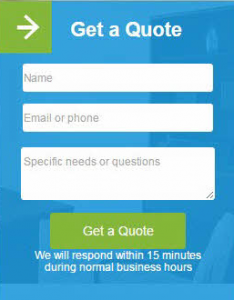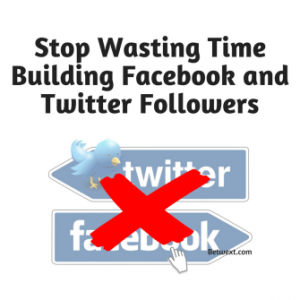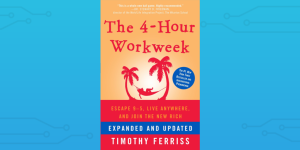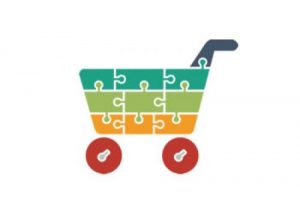Anton recently talked about funnels.
Specifically, the highest converting sales funnel he uses to grow audiences, product sales, and businesses.
They’re straightforward and easy to understand once you see the setup.
Except… who do you target? How do you get people into these funnels reliably and on a consistent basis?
Here’s how to use Facebook advertising to fill each of those high converting funnels. And to ensure you have a high converting audience (and pay back your investment many times over).
Break Even Funnel: Targeting New Audiences
The first funnel is the Break Even Funnel, whose sole goal is to match new revenue with ad spend.
The result is that the campaign breaks even on profitability. But the goal is to build an audience of verifiable buyers.
This is a critical distinction because you’re filtering out tire kickers, browsers, and uninterested buyers.
These ‘break-even’ buyers are going to be the ones you can target later with your most profitable courses, products, and services.
But… how do you find them initially? Where exactly do you look for new audiences when they don’t already exist?
The first step is to get these people onto an email list.
The best offers at this point are content-based. With content, you’re able to focus on your audience’s problems and pain points. This increases the amount of people who’re potentially interested in what you’ll have to offer.
For example, Drop ship Lifestyle has a free mini-course that teaches newbies how to setup a profitable eCommerce shop. This is the bait that attracts people into the beginning of a longer relationship.

Assuming you already have a good idea for who you’re targeting , your next step is to search for these people online based on their interests. Never skip creating buyer personas or doing the customer research.
For example, an easy place to start is by thinking about where these people go for information. That could mean big magazines, blogs, and other media properties. Targeting their fans and people interested in their content can get you a decent sample size.

The goal is to shoot for an initial audience between 500,000 – 1,000,000 people.
But…
We need to further refine this audience. Otherwise, we’re going to waste a lot of money on unqualified or uninterested people.
So the next step is to use interests intersections and exclusions.
This gets a little more advanced. But it allows us to refine a huge, generic audience down to one that’s much more likely to buy.
For example, if you’re selling a course on “how to get more clients”, your next step would be to target people who have an interest in training, consulting, coaching, sales, etc.
Then, you can even take this a step further and set-up exclusions to rule out certain types of people. This is perfect if you’re trying to rule out those who might be too advanced for your offer or already do what you’re selling.
So you can rule out people who already work in marketing, advertising, design, etc. (because there are overlapping skillsets).

Going back to the initial eCommerce example, you might want to rule out more advanced people (because this initial offer is best for rookies). So you might want to rule out people who are interested in Magento, which is an industry-standard platform for big eCommerce websites.
This sounds time-consuming. It is.
There’s a fair amount of experimentation in finding the right initial audience.
But the good news is that this is the hard part.
From here, it’s all downhill.
Primary Offer Funnel: Targeting Break-Even Customers
The Primary Offer Funnel is where the real money for your business is made.
It’s the several-hundred to multiple-thousand-dollar items that are big ticket purchases for consumers.
In most cases, you wouldn’t want to promote this to a brand new audience. If those people don’t know who you are and haven’t expressed interested in your products, the conversion rates would be too low (and the Cost per Sale too high) to profitably grow through advertising.
Instead, you’re now going to target the specific people who just purchased from your Break Even Funnel.
How?
Custom audiences.
From here on out, you’re going to rely on pre-built, custom audiences for advertising. Then you’re only targeting a very specific audience of people who’ve already purchased from you.

Currently, Facebook allows you to create custom audiences based on:
- Customer Data: Facebook will ‘match’ their user base with email addresses, phone numbers, customer IDs, etc.
- Website Traffic: People who’ve viewed website pages (but maybe not others).
- App Activity: People who have (or haven’t) done something specific inside an application or product.
- Facebook Engagement: People who like, follow, or share your Facebook content frequently.
The most effective custom audiences are made up of specific data, like email addresses.
When you create custom audiences on Facebook currently, you can either upload a file of email addresses manually or import people directly from a MailChimp list.

For example, when people purchase the Break-Even product from you, their email address should go into a customer database or a specific MailChimp list.
Now you can take that data and send it over to Facebook. They will match up user profiles with those email addresses, and run special retargeting or remarketing campaigns against them for your Primary (read: money making) product.
Webinar Funnel: People Who Haven’t Purchased Your Primary Offer
The Webinar Funnel plays a crucial role to nurture leads who’ve already purchased the Break-Even funnel product, but for whatever reason, have held off on purchasing the Primary offer.
Those two sequences are largely automated; meaning that they will use a series of coordinated emails, etc. to automatically follow-up with people over a few days, weeks, and months.
If people have gone through those two funnels, but still haven’t purchased the Primary (money-making) offer, they might need to develop more interest and trust in the offer first.
These potential customers need a little extra hand-holding, face-time, and maybe a few special offers to push them over the edge. So let’s give it to them!
Once again, we’ll be relying on custom audiences to determine who is ‘caught in the middle’ of the two funnels.
One method is to create a pixel on your website that tracks people who visit one page (like the offer or order form), but NOT another (like the ‘thank you’, confirmation page that people see once an order goes through successfully).

Another method is to use more advanced marketing automation platforms like HubSpot or Infusionsoft.
These will help you ‘tag’ people, or set them up in special lists that will automatically pull them off of one automation sequence (if they haven’t purchased within a certain time) and add them to another (so that we can use the webinar to pique their interest and hopefully add more value).
The best part is that these platforms will automatically sync with many popular webinar tools, like GoToWebinar.

That means you can set-up the integration, create the funnels one time, and the entire sequence should literally be programmed to run on its own.
Conclusion
Advertising isn’t an expense from a marketing standpoint.
It’s an investment.
You should be able to confidently put in $ X and generate $ X+ at the end of the day. That allows you to continue reinvesting your original amount. And it also gives you a tailor-made audience that is much more likely to purchase bigger, expensive offers (that can grow your business).
Lead nurturing techniques, like webinars, can then also be included to help people ‘on the fence’ get more comfortable and familiar with what you’re offering.
Using sophisticated techniques like this takes work to coordinate.
But it ensures that you’re targeting the most relevant audience possible.
That way, the only people who will show up on your webinar or who see an expensive offer are already legitimate, paying customers who’re pre-qualified.
Business & Finance Articles on Business 2 Community(94)







